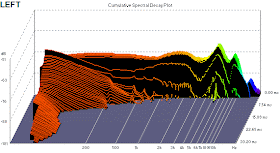CON: Channel mismatch, high-cut above 10 kHz, and poor electroacoustic efficiency(sensitivity) for portable use. Some might find the tonality way too bright, due to the inexaggerated sub-bass & the peak @ 6 kHz.
ON SECOND THOUGHT #1: As expected, shallow insertion is not much big of a deal for Etykids, since it is a dynamic driver. Moreover, there is no response to be altered by the half-wavelength resonance above 10 kHz to begin with.
ON SECOND THOUGHT #2: EK5 can be precisely tuned by using acoustic dampers with proper care. The acoustic damping effect mostly occurs in the mid frequency range, at which the Helmholtz resonator(equivalent to an acoustic LRC circuit) is applied by the manufacturer.
ON SECOND THOUGHT #3: The difference between MC-5 and EK-5 is rather subtle, but they are definitely different kind of beasts.
ON SECOND THOUGHT #4: The sleeve analysis will be discussed on a separate blog entry. The sleeve analysis won't be carried out, due to the fact that EK5 yields almost no difference in sound with different sleeves. Still here is my two cents for EK5 users: Equip EK5 with a pair of ER6-14 sleeves (for reversed horn-effect) & 1000 Ω acoustic damper, and insert the IEM as deep as possible, preferably past the second bend of the external ear canal. You will end up with much controlled tonality.







Can you please enlighten us as to why measurements here shows such extreme cut-off above 10khz?
ReplyDeleteThe swept sine plot on Etymotic's website shows a dip around 9khz, then rises back up at around 12khz. Perhaps because individual product variations, or maybe because your measurements were done at a different level?
If they inserted the iem deeper than where the reference plane is located, possibly. However, it is quite unrealistic to think that normal users can insert anything that deep.
DeleteThanks for the reply.
DeleteSo I'd suppose if at all possible, Etys should be inserted as deep as one can squeeze them in?
I read your article on the general 0.5cc rule & occlusion effect.
If inserted to the point where occlusion effect is no longer observable, would you say that the insertion depth has reached the reference plane?
For the sake of fairness, the insertion depth should be no more than that of the reference plane. (Which is equal to 1/2 wavelength resonance at ~12 khz)
DeleteAnd yes, that will be the general rule of thumb as there is no better option to figure out the 0.5cc residual canal volume.
ReplyDeleteThis is a great post. I like this topic. This site has lots of advantages.I found many interesting things from this site. It helps me in many ways. Thanks for posting this again.
aol email technical support number
att email customer support number
roadrunner email support
Yahoo email support number
Best makeup artist in gurgaon